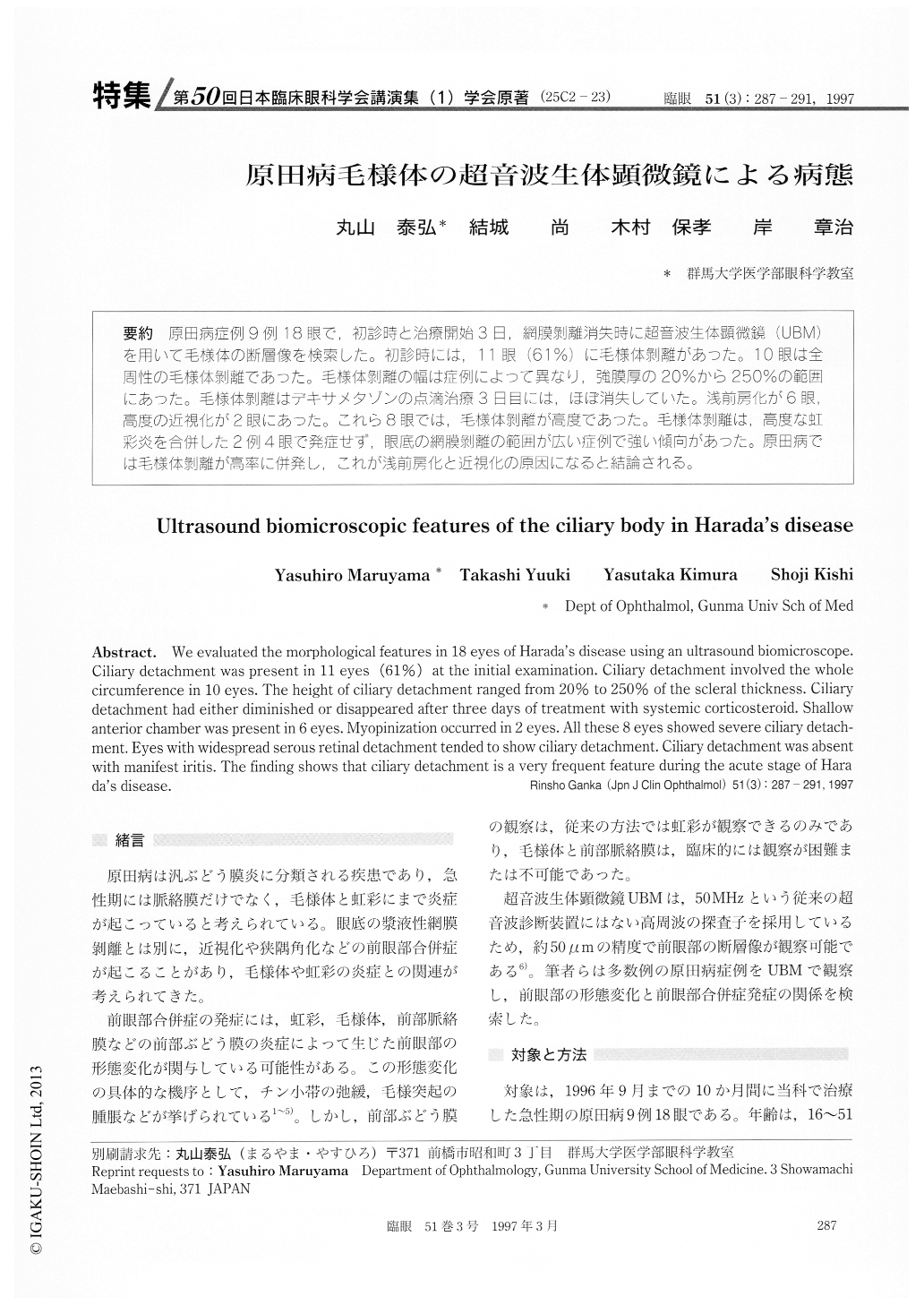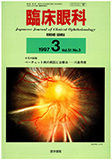Japanese
English
- 有料閲覧
- Abstract 文献概要
- 1ページ目 Look Inside
(25C2-23) 原田病症例9例18眼で,初診時と治療開始3日,網膜剥離消失時に超音波生体顕微鏡(UBM)を用いて毛様体の断層像を検索した。初診時には,11眼(61%)に毛様体剥離があった。10眼は全周性の毛様体剥離であった。毛様体剥離の幅は症例によって異なり,強膜厚の20%から250%の範囲にあった。毛様体剥離はデキサメタゾンの点滴治療3日目には,ほぼ消失していた。浅前房化が6眼,高度の近視化が2眼にあった。これら8眼では,毛様体剥離が高度であった。毛様体剥離は,高度な虹彩炎を合併した2例4眼で発症せず,眼底の網膜剥離の範囲が広い症例で強い傾向があった。原田病では毛様体剥離が高率に併発し,これが浅前房化と近視化の原因になると結論される。
We evaluated the morphological features in 18 eyes of Harada's disease using an ultrasound biomicroscope. Ciliary detachment was present in 11 eyes (61%) at the initial examination. Ciliary detachment involved the whole circumference in 10 eyes. The height of ciliary detachment ranged from 20% to 250% of the sclera] thickness. Ciliary detachment had either diminished or disappeared after three days of treatment with systemic corticosteroid. Shallow anterior chamber was present in 6 eyes. Myopinization occurred in 2 eyes. All these 8 eyes showed severe ciliary detach-ment. Eyes with widespread serous retinal detachment tended to show ciliary detachment. Ciliary detachment was absent with manifest iritis. The finding shows that ciliary detachment is a very frequent feature during the acute stage of Hara da's disease.

Copyright © 1997, Igaku-Shoin Ltd. All rights reserved.


